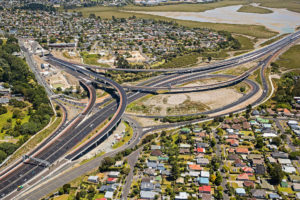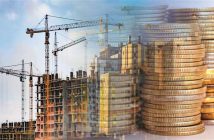The announcement that Budget 2017 will allocate a further $11 billion in new capital infrastructure has been warmly welcomed by industry leaders
“It will be essential that this new funding unlocks local and private capital to accelerate much-needed infrastructure investment,” Infrastructure New Zealand CEO Stephen Selwood insists.
The government’s announcement increased planned new capital investment to 2020 from $3.6 billion to $11 billion, but left details of project priorities till the May Budget.
“This is a massive increase and the largest capital investment commitment by any government since the 1970s,” Selwood notes.
“But it must be said that New Zealand’s growth challenge is the highest it has ever been and meeting population demands requires the services for a city larger than Nelson to be added every year.
Added to the growth challenge is New Zealand’s historic under-investment in infrastructure. “The reality is that it would not be difficult to spend $11 billion in 2017 alone.
Selwood says the government’s commitment to the Kaikoura rebuild, along with its $1.5 billion contribution to the CRL, a further $1.5 billion in the East-West link, a billion more on each of Mill Rd, the northern busway extension and the northwestern busway, $400 million on Penlink, plus state highway improvements in the regions is enough to consume all $11 billion – let alone much-needed investment in health, education and housing nationwide.
“To get full value out of national resources, the government is going to need to use its funding to unlock private investment,” Selwood argues.
“A shift to debt funding strategic projects represents good fiscal management and in this regard it is pleasing to see the government looking further at public-private partnerships.
ACC, NZ Super, iwi and domestic and international institutions are looking to invest in New Zealand’s infrastructure and Selwood believes it makes sense to accelerate projects which meet demand for housing and services.
“In addition, the government has already demonstrated the value of capital recycling, via the partial sale of the energy generation companies in particular, and a similar strategy could be adopted by Auckland, Christchurch and other councils to bridge the infrastructure funding backlog,” he believes.
Priority should also be given to projects where developers and land owners who benefit from land value increases contribute to infrastructure investments.
“The combination of public and private capital is central to delivering the infrastructure needed to support New Zealand’s growth,” Selwood maintains.
Property Council New Zealand has also welcomed the government’s announcement of $11 billion of new funding for infrastructure across New Zealand over the next four years.
It believes the funding announcement, ahead of Budget Day, signals a “clear commitment” by government to continue its support for New Zealand’s economic growth and development.
Property Council Chief Executive Connal Townsend says a lot of the country’s infrastructure is at the end of its useful life and expects that asset replacement would feature prominently in the budget.
“There is a clear expectation that at the time of asset replacement, capacity will be increased to service projected growth,” he believes.
“Government’s announcement is a recognition that houses and commercial properties do not exist in isolation but need to be supported by infrastructure such as roads, schools and hospitals.”
Townsend adds that he pleased the government is actively looking for public private partnership opportunities to accelerate infrastructure provision that may not necessarily be in sequence with its capital works programme.
“It is important that we look to alternative funding mechanisms, rather than simply relying on taxpayers to continually foot the bill.”
Townsend says Property Council is keenly awaiting Budget Day to see how the $11 billion will be allocated.
“Under-investment in infrastructure creates significant deadweight losses for the wider economy. Property Council is pleased that government recognises this.
“Infrastructure spending must be seen for what it really is. It is an investment in our cities and a productive input into the wider production process, rather than a mere cost.”
For its part, the EMA believes the investment will be good for business.
“Our region is under pressure and we welcome this additional investment. It builds on the commitment made in 2016 to invest $110 billion in infrastructure over 10 years,” says EMA CEO Kim Campbell.
“We have long advocated for the need to invest in much needed infrastructure to enable growth, and cope with growth.
“Auckland’s growing pains are well known, Tauranga and Hamilton are experiencing similar levels of discomfort as they struggle to cope with growth.
“Other regions such as Northland need infrastructure to enable growth.”
However, Campbell believes there are “still a number of issues which need to be addressed, if we want to truly enable long term, large scale investment in the country’s infrastructure and unlock the prosperity such investment will deliver.
“We need to look at new funding options for local government, to enable these authorities to ably cope with their issues – whether that’s enabling growth or coping with it.
“Also, where is the discussion around using tools other than relying on central government coffers, to enable this?




